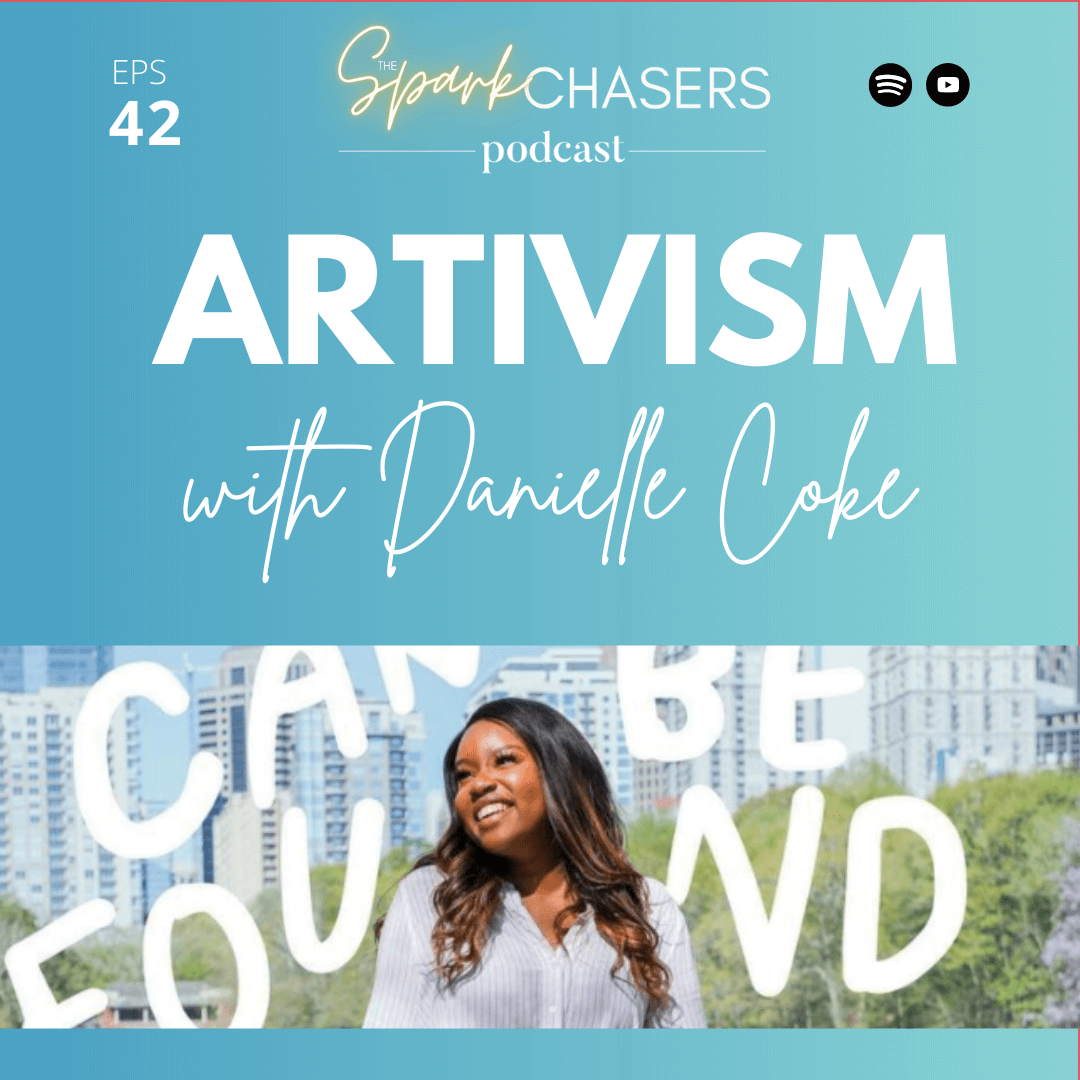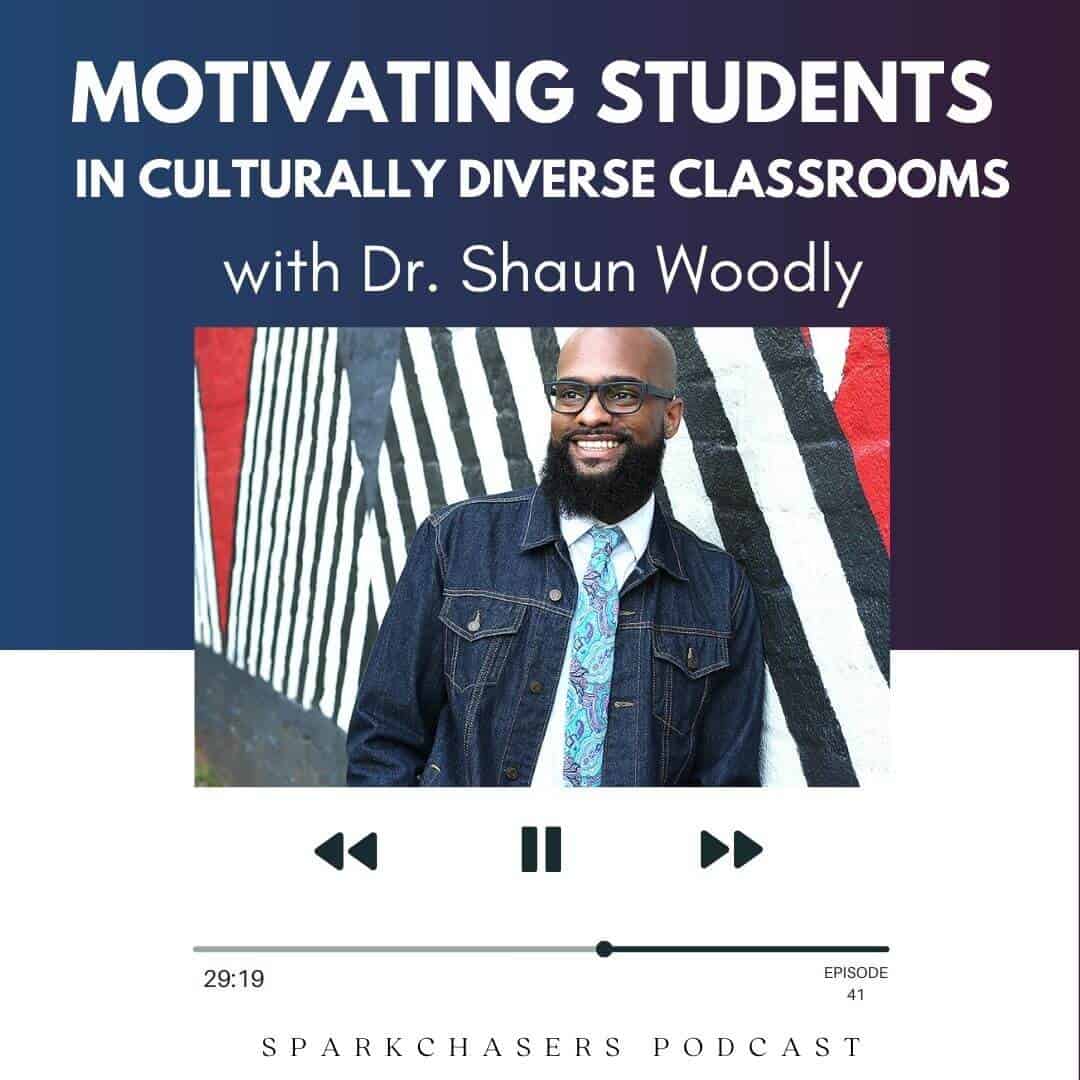Sparkchasers Episode 34 | Show Notes
CBAM for Learning Readiness
What’s the one thing most teachers dread more than anything else? The words “new initiative”. More often than not, there are rolled eyes and inward groans. Not because teachers are afraid of change. But because teachers know that those two words typically mean we’re building the plane while flying it. There’s not a sequential plan of action that also takes into account what is already happening in the school.
This is a common barrier for arts integration and STEAM as well. And the very best way I’ve found to jump that hurdle is through the CBAM model.
What is CBAM?
CBAM is a model for understanding where your participants are at any given point. It is a tremendously helpful tool because it provides you with information on what professional development your teachers need, how to deliver your professional development effectively and provides opportunities to monitor teacher growth throughout a period of time.
CBAM is an acronym for Concerns Based Assessment Model. It is based on the premise that there are 7 stages that people go through within the learning process (which is also a great thing to remember with our students). The stages are:
Awareness, Information, Personal, Management, Consequence, Collaboration, and Refocusing
Each stage has definite characteristics that when fully developed lead to the next stage of concern. It is an assessment model because it is a way in which to evaluate where teachers (or students for that matter) are in their progress toward mastering a new skill or program. The stages can be broken down into three areas of focus:
Self, Task, and Impact.
Self
These stages include Awareness, Information and Personal. Here’s a more in-depth breakdown of what each stage looks like:
Awareness is when people are either just hearing about something for the first time OR they have never heard of the process. In this stage, people don’t think they need to change and that what they are doing is just fine.
Information is when people have been made aware of a new program and want to gather more knowledge about it. In this stage, people what to know how this will relate or help themselves and how to get more information on the topic.
The Personal stage is when people want to know how this new topic or program will effect them. This sounds like, “What does this have to do with me?” and “How much work will I have to do?” or “How does this effect me and my job?”.
Task
The task stage involves coaching on your part as the leader of the new program and providing your participants with the tools they need to use and be effective with the program. In this part we have:
The Management stage is where people need to know the exact steps that they need to follow and begin to question how they can implement something better. You will hear questions like, “How does all of this work together?” and “What techniques can I use?” when people reach this stage.
In the Consequence stage, people are seeing the results from their work. In this stage, you’ll either begin to see the consequences of getting behind on managing the change OR you’ll begin to see the results from implementing the change. In this stage, it’s important to help your participants make judgments about the new program and its implementation in order to foster development into the next stages.
Impact
During this final stage, participants have learned and implemented the program to the point where they become the leaders and begin to look for new ways to move the program forward. This is the stage where the next vision begins to take shape – participants have moved from being “all about me” to being “all about us”.
During the Collaboration stage, you’ll find participants want to work with others to accomplish more and move the program to the next level. This is where innovation and creativity truly begin to take hold in your program. You’ll hear comments like “I wish there was more time to work with the other arts integration pilot teachers. I think they could really understand what I’m going through and might have some ideas to help me.” The goal during this stage with teachers is to provide that collaboration time so that they can truly move ahead with their integration.
Finally, in the Refocusing stage, participants feel like they have done well with the change, have evidence of success within their classroom, and want to tweak the program to make it better on their own. You’ll know that a teacher has reached this stage when you hear things like “I’m sure I know a better way to implement arts integration that with the method we’ve been using. I want to use a combination of arts education professional development and critical skills professional development”. Hearing comments like these can be disconcerting, but it’s actually a compliment to the program because teachers feel so at ease with the program that they are willing to step up and try something different to enhance it for their students. The focus has finally shifted towards how the program could best benefit students, and not about the burden the program will have on the individual teachers.
Using CBAM with Arts Integration
The CBAM can be used with any number of professional development ideas. Arts integration is one method where it fits particularly well because it can be used as a pre-assessment to see what teachers already know about arts integration and will give you a good idea of how much work you’re going to need to do to plan for and move this program along. During the arts integration process, it’s also a great tool to use to monitor how teachers are using it, what further professional development and support they need and as a way to encourage them by providing them with others who are either in the same spot on the scale or who have made it to the next step as mentors for moving forward. And, after arts integration has been in your school for a while, the refocusing step provides you with a great opportunity to take the program to the next level and use it in conjunction with 21st century learning skills, common core, and any other national initiatives that come along.
CBAM is flexible in that it can provide both the assessment of the program within the building and for the teachers themselves. This model can be used by administrators and arts integration site leaders to monitor individual teacher professional growth by having them look at the scale, recognize where they are and where they would like to be, and then developing a plan to get there. It provides teachers with a great self-reflection tool to guide their own learning and gives leaders a chance to help them through that process.
Adult learning theory
In order to truly communicate effectively and for teachers to respond well to your professional development, you must keep in mind adult learning theory and how it is different than how you teach on a daily basis. Many educators think that leading professional development is easy because it is just teaching. In fact, this is often not the case because educators are trying to teach their peers as though they were students. This can cause resentment, “tuning out” and a general attitude of ambivalence toward you and your program. In order to avoid this, you’ll need to have a basic understanding of adult learning theory and how to harness it to work for you.
Adults are self-directed and can motivate and learn for themselves. What they need from you is a facilitator to point them in the right direction and then give them the freedom to discover on their own. You also need to recognize that adults have a wealth of experiences and may have worthy things to contribute to the program based on those experiences. Provide a way for them to shine! Adults also need a goal to reach and that goal needs to be relevant and practical to their lives in some way. If you can’t explain that arts integration is relevant in their classrooms and that the professional development that will be provided will directly address how to use arts integration to impact student learning, you will get nowhere.
Make sure that this is one of the first things that you speak to when working with your staff. And, remember to not overwhelm your staff with everything all at once. Be practical! Put yourself in their shoes – can they really accomplish this in one month, one quarter, one year? Treat these wonderful adults with the respect that they deserve as you work with them (not teach at them) towards using arts integration.
The nice thing about being a teacher is that good teaching is always good teaching. While the adult learner is different than the students in your classroom and must be treated differently, the way in which you teach the content is relatively the same. You must provide a source of motivation and engagement to capture their interest right from the beginning. You must set reasonable expectations and outline them clearly right from the start. Make sure that you are positive, but firm when your teachers are working through the process. You always want to remain upbeat and upward spiral a conversation to think about the possibilities, rather than the challenges.
However, you’ll also need to be firm in that this is a research-based method and the school will be implementing it. Don’t allow the program to be battered down by a few “Negative Nancy’s” – politely address their concerns and redirect them into thinking about solutions. You’ll also need to provide opportunities for retention of your information through practice. Encourage teachers to try a technique or to work with a peer to create a lesson plan. Teachers will only truly learn this information with practice and by reflection of their own practice.
Additional Resources
- Concerns Based Adoption Model on American Institutes for Research
- Accelerating Systemic Change Network’s explanation of CBAM for STEM
Have a Question?
Do you have a question about today’s episode or need help with something? Let me know using the button below and I’ll make sure to chat about it on an upcoming episode.






